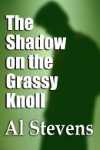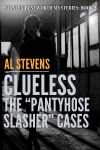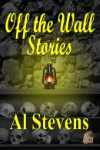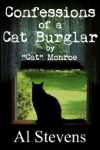The Voice
- Above all, ensure that the voice is different enough from my own voice.
This doesn't mean it has to be way higher or lower in pitch or that it must have extreme qualities, such as nasal or whining characteristics that such a character would not typically have. It just has to be different.
- Recognize one's own limitations.
The figure can't have a voice I can't make. Each person's vocal abilities are limited with respect to range and timbre. We can make some changes, but only within the boundaries of our own limitations.
- Choose a voice that won't do harm.
Falsetto, loudness, or too much harsh, scratchy timbre can damage the vocal cords. If it hurts to say it, it's probably doing some damage.
- Choose a voice that fits the character.
This one should be obvious, and I shouldn't need to emphasize it, but I find myself spending too much time exploring inappropriate voices.
- Rate of speech helps to define the character.
Given the personality that this fellow is developing, he wouldn't speak rapidly. Slowly and deliberately is better, I think.
- Choose a dialect or accent that fits, is believable, and that I can make effectively.
This is a tough one. Uncle Sweeter's multiple inspirations are from the Pennsylvania coal region and the mountains of Kentucky. Being from the South and having married a Pennsylvania farm girl, I can do both dialects reasonably well. But I don't want to irrevocably associate the character with only one geographic area. He might then natually assume verbal idioms characteristic of that region that are not well understood by others.
- Don't choose or eliminate a voice until I've heard it.
We don't sound like ourselves to ourselves. We're hearing our voices from inside our heads. It's important to record the voices we use to hear what they sound like to others.
An elderly person speaks with certain vocal impairments that come with age. The best way to understand this is to listen to a movie actor whose career spans his young years into old age. Listen to the voice from both eras and pay attention to how it changes with age. You recognize both voices as belonging to the same person, but the vocal artifacts of age are evident in later performances.
An elderly person's voice is scratchy. It is often softer, almost a whisper. There's a lot more breath in an elderly voice than in the strong voice of a young adult. Their dynamic range is narrower, which means their lowest volumes are louder and their highest volumes are quieter. Likewise, their frequency spectrum is narrower, which means they don't change their vocal pitch to the extremes they used when they were younger.
Young people use large differences in vocal speed, frequency and volume to accentuate the urgency of whatever they are saying. They want you to get it. Right now. So they can move on. Older people realize that nothing is all that important, so they slow down and speak in normal tones more quietly. And if you don't get it, what does it matter?
I'm working on it. I've been there before. My wife learned a long time ago not to call from another room, "Who are you talking to?" But it does freak out the cats.










0 Comments:
Post a Comment
Subscribe to Post Comments [Atom]
<< Home